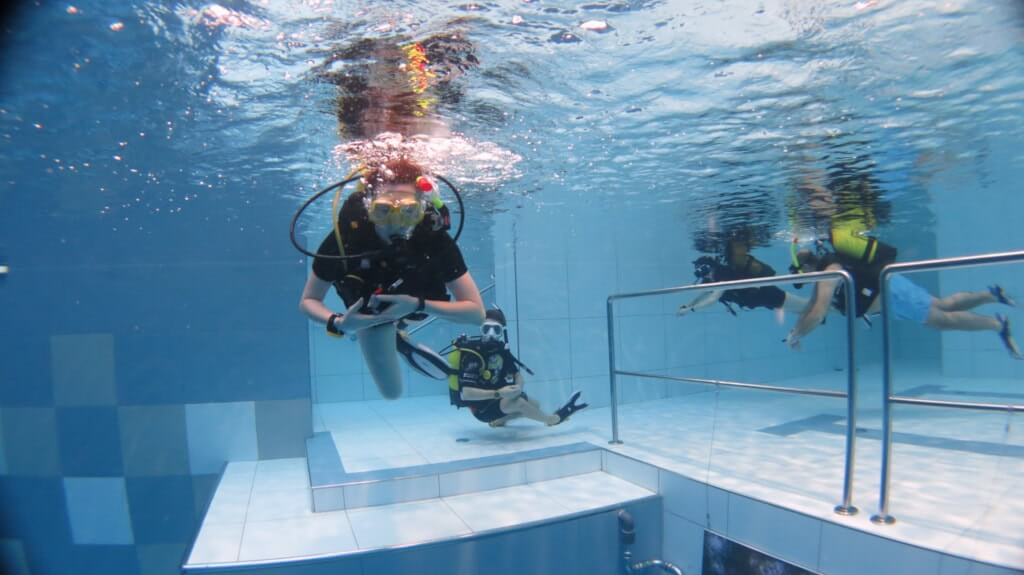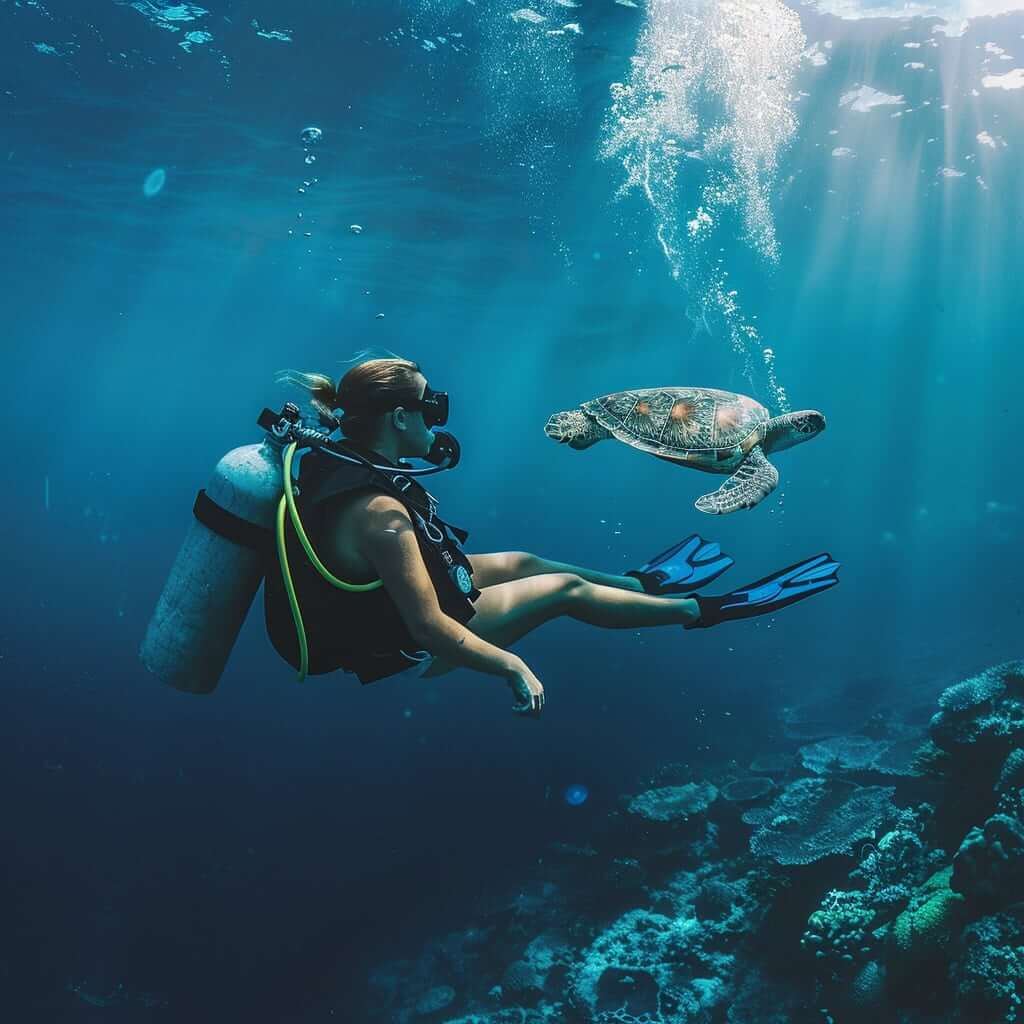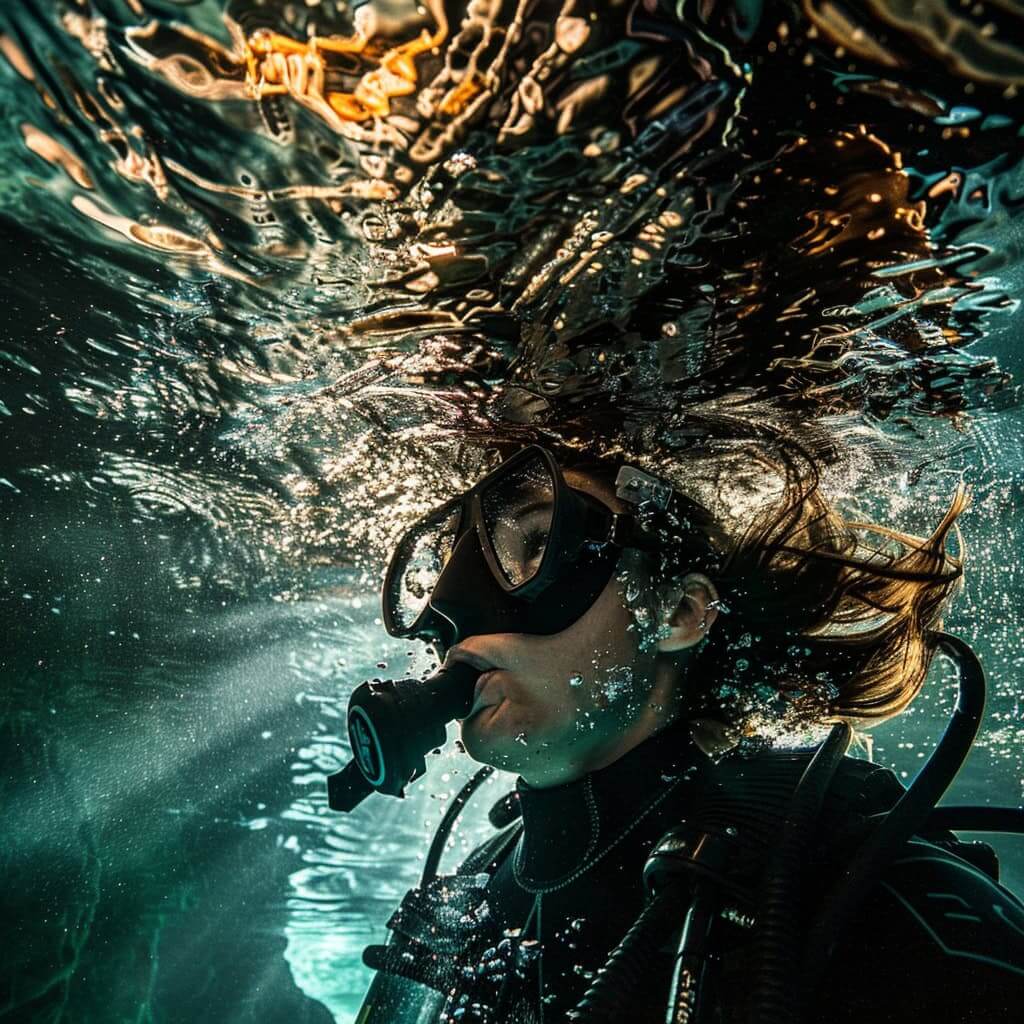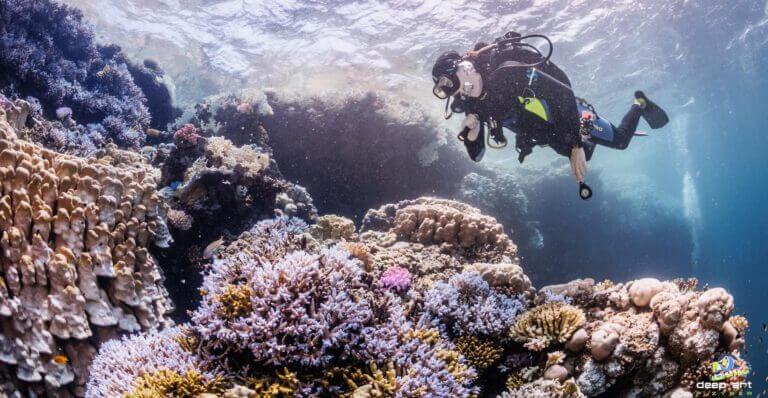Basic information about the course
- Minimum age -12 years
- Maximum depth-18 meters
- Duration – 3 dive days
Deepspot Indoor Course
If you like challenges, enjoy learning difficult skills, and are looking for something new, then the Indoor Diver course is for you. In this course you will master all the knowledge and skills , which are needed to dive independently; so in Deepspot conditions in the future you can dive independently with another diver like you. To then explore lakes, seashores and quarries on your own, you’ll just need to gain some experience. Gain experience in one day/two dives on completing the SSI or PADI Open Water Diver OWD course (we describe this in more detail at the end of the text)
From the full OWD diving course, the Indoor Diver course at Deepspot differs only in that it is conducted in ideal conditions. The diver is isolated from the influence of the environment, i.e. there is no cold wind, the water is incredibly warm and clear, you learn quickly and efficiently, but you really do not acquire the experience of knowing that in the water it may be cold, you may not be able to see anything, the wind will blow, there will be a wave or a current.
When you sign up for the Indoor Diver course, you will receive training materials and will be able to learn the knowledge needed for diving, watch on online videos the exercises you will later perform in Deepspot. Then there will be the first meeting, a lecture by the instructor before the dive. During the lecture, the instructor will discuss diving equipment and all that will be done in the water. What you will have to learn in practice. Then you need to choose equipment, learn how to prepare it for diving. After assembling the equipment, we dress the gear in shallow water and dive.

Diving in Deepspot
Learning to scuba dive is, at first, learning to breathe from an automatic with air from a cylinder. The first time it is an amazing experience. You plunge your face under the water and continue to breathe freely. Enchanted world….. .
The next skill, buoyancy, is just as important when diving as a sense of balance on the surface when walking or running. Mastering buoyancy gives us control over hovering in the depths, submerging and emerging. Several exercises such as pivot and hover help. The exercises will allow you to feel how buoyancy changes by adding air to equipment such as a jacket or by breathing.
When we are underwater we look through a diving mask. However, you can only see everything well through the mask when there is no water in it. That’s why one of the skills you need to master is to clear the mask of water. A very mysterious skill. If a little water got into the mask or we poured it specifically to, for example, get rid of fogging from inside the mask, then you need to get rid of this water by making a slight exhalation with the nose. At this point, as if from an inverted glass, the air pushes this water outwards so that you can continue to dive and swim calmly and see everything clearly. There was water, there is no water.
The equipment we use during diving is of such high quality that it is virtually failure-free; but somewhere in the back of your mind you need to be aware of how to cope, in the so-called very unlikely situation of a failure or when we simply get lost and run out of air in the cylinder, despite the fact that a special gauge (pressure gauge) shows us all the time what the pressure in the cylinder is. In the event of a shortage of air or failure of the machine, we must be able to use a backup, the so-called alternative partner air source. That is, from his spare machine or know how to give the partner our spare machine ourselves. One of the basic exercises on the course is the ability to share the air. First simply stationary kneeling on the bottom, then in the pivot and then while swimming or ascending.

Indoor SSI – upgrase to OWD, OWD PADI
Additional 2 dives
Imagine a dark depths in which a mysterious shape slowly outlines itself. After a while you are sure, it is the wreck of a helicopter resting on the bottom. The cabin, the tail, Well unfortunately the rotor is not there….. You are free to float away, watch it, you forget about the force of gravity. You float freely in space. This is how a Real Adventure can begin. How and where can you experience such an experience? This is an excerpt from a full OWD course or an upgrade from the Indoor Deepspot course to OWD. In the course of such a training you will experience this in the old flooded Honoratka pit.
As we wrote earlier, training at Deepspot under the Indoor Diver program will really give you the diving skills and knowledge you need. However, it will not give the experience needed for diving in the wild. Deepspot, however, are idealized conditions. Such a training room, a hall where we learn diving skills very efficiently and precisely. However, in order to go on diving expeditions completely on your own, it would be a good idea to familiarize yourself with such conditions under the supervision of an instructor. Just get some experience and such a program is just an upgrade from the Indoor Diver program to a full OWD or a full SSI or Padi OWD course.

Honoratka
Why the Honoratka pit? Honoratka is a flooded old lignite pit near Konin. It is one of the best dive sites in Poland. Very convenient entrance to the water, slowly descending bottom, good visibility. The basin has been sprinkled with yellow sand after mining, so it combines good visibility with a very bright, nice bottom. It is well prepared for diving because there is a diving base on the shore that provides good facilities – shelters that protect us both from the sun and the rain, and a little from the wind. Convenient entrances to the water. Here you will gain experience in open water diving. Both the experience of simply diving and the experience of just coming to and using such a place i.e. a dive base on some lake. This is how good dive sites in Poland and Europe are usually organized. After such training, you will easily know how to organize a diving trip to some other such dive site in Poland or, for example, in Germany. In the area of, for example, Leipzig, there are many very interesting quarries in which you can also dive and there are similar diving bases on their banks.
After such an upgrade, you can obtain the Open Water Diver degree and while on a trip somewhere in the world, whether in Europe or Egypt or somewhere further afield, you will be able to take advantage of guided diving at dive bases during which a group of divers is taken by people familiar with the dive sites to dive. You can admire the beautiful blue water, coral reefs swimming fish there. To be a real diver.











